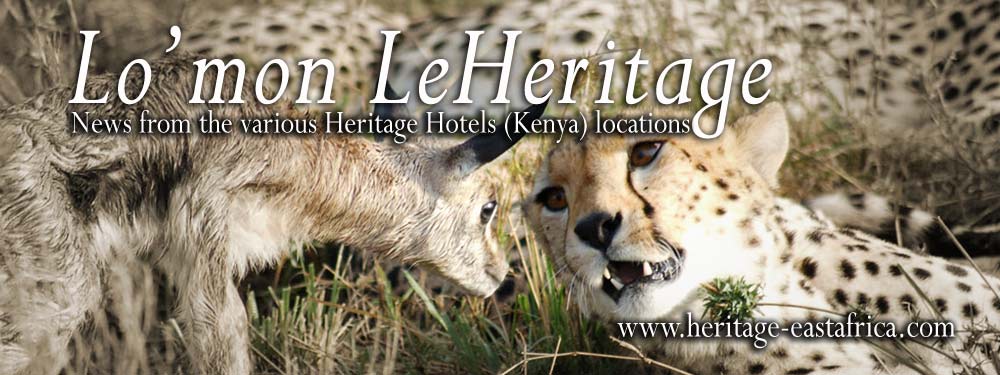Very hot days but cold early mornings.
Most parts of the park do not have much grass – nevertheless
where there is some grass, the migrating herds of wildebeest and zebras are
there.
Many seasonal rivers are almost dry. Only the permanent
rivers inside the park are still flowing. Interestingly, the Mara River which was
very low for most of the year now seems to have a lot more water which is an
indication that there is some rain upstream at the Mau Forest that is the
source of the river.
Wildlife
Lots of plains game
concentrated around our camps.
At the end of September,
there was a little rain and the grass sprouted which attracted the herbivores including
big herds of the migrating wildebeest and zebras. We saw herds crossing at the
Talek River heading south towards the Serengeti.
This is the traditional
calving season for most antelopes like topi, Thompson gazelles and Grant’s gazelles,
hartebeest, buffalos, elands and warthogs. A few giraffes have also given birth
around Olkeju Rongai.
The elephants are slowly
coming back into the park now that the migration is almost over.
Predators
Lions
The Rekero-breakaway Pride
It’s at Chemarta doing
extremely well with several cubs of different ages. The Musketeers are the
dominant males in the pride. The pride positioned itself strategically at the
Chinese hill crossing point where it has made successful kills of animals trying
to cross the river.
The Musketeers are also
taking care of the Paradise pride. This
pride seems to be expanding its territory across the Talek River into Maji ya Eland.
The Ridge Pride
It’s at Double-crossing and
the Topi plains. It’s doing quite well with the two dominant males - Lipstick
and Blacky - holding on to the pride and breeding with the females.
The cubs are doing very well
and one of the older females has three new cubs that are about two months old.
The older four cubs - the Mandevus - three brothers and one sister - are about
three and a half years old. They seem to be slowly moving away from the
maternal pride and may soon establish a new territory of their own.
The Enkuyanai Pride
Some females from Olare Orok
conservancy are now at Chumvi Chumvi along the Ntiakitiak River.
The dominant males - Ololpapit
and Olbarnoti - who took over the pride from Romeo2 and Mohican don’t seem to
be very stable. They are sharing the girls with Blacky and Lipstick of the Ridge
pride.
Strange though, the pride has
three cubs who seem to be tolerated by the two sets of males – Blacky and
Lipstick and Ololpapit and Olbarnoti. Ordinarily, if neither of them is the
father, the cubs would have been killed by them.
Cheetahs
The five-male cheetah
coalition is still moving around the park. It’s been seen to cover great
distances in a day taking advantage of the wildebeest around, frequently
killing both young and full grown wildebeest.
The two female cheetahs who
are Imani’s cubs are still together
and have moved from Paradise plains to Double Crossing where they killed an
impala. But because of hyenas and the Ridge pride they could not stay long in
the area. They are now in the Mara Triangle.
Malaika is doing well with her two cubs. They are fully grown. We
expect them to cross over to Kona ya Were as there are many gazelle and topi
foals to hunt.
Leopard
Bahati with her two cubs is doing great. She killed three wildebeest next to the Mara
Intrepids Camp football pitch where she stayed for four days.
Safarilink, the older of Bahati’s cub from the previous litter has
moved out of the maternal territory and establishing his territory around Maji
ya Eland. He has been seen with kills up the tree.
Written by By Raphael Koikai





























